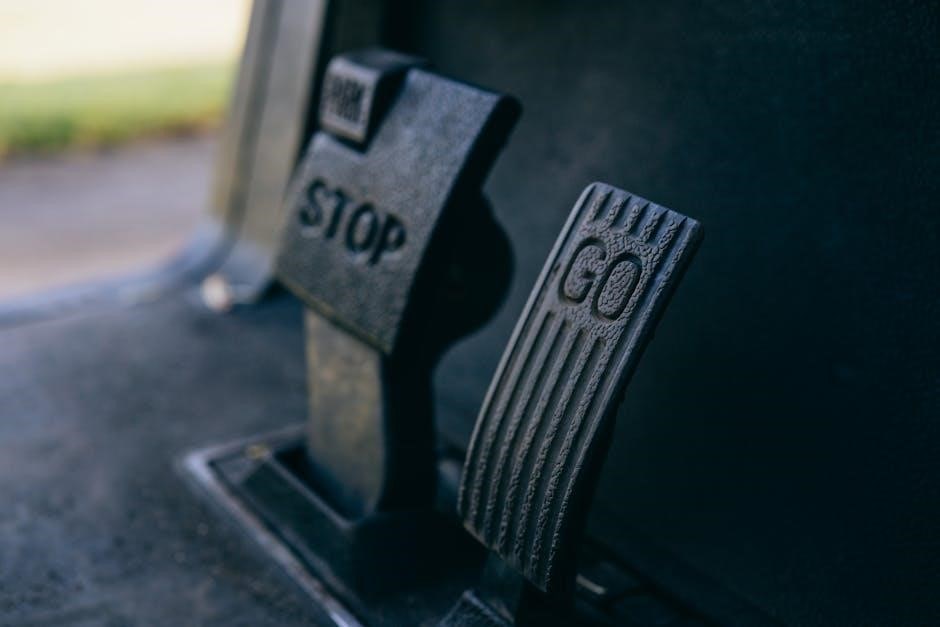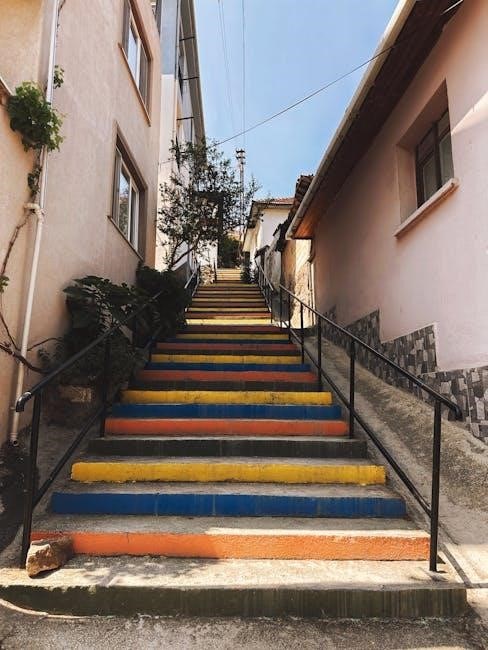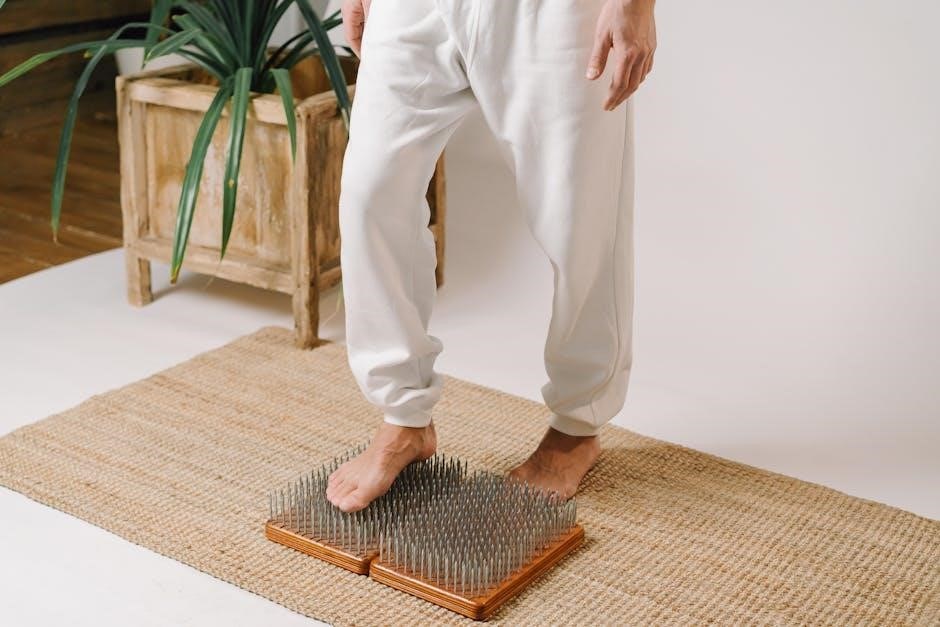
step by step guide to gel nails
Gel nails are a popular choice for their durability and high-gloss finish. They combine style with long-lasting wear‚ making them ideal for special occasions or everyday use. Unlike traditional nail polish‚ gel nails are cured under UV or LED light‚ creating a chip-resistant finish that lasts up to two weeks. This guide will walk you through everything you need to know‚ from preparation to aftercare‚ ensuring salon-quality results at home.
What Are Gel Nails?
Gel nails are a type of nail enhancement that uses a gel-like polish cured under UV or LED light to create a durable‚ high-gloss finish. Unlike traditional nail polish‚ gel nails are applied in multiple thin layers‚ including a base coat‚ color coat‚ and top coat‚ each cured to hardness. This process ensures long-lasting wear‚ typically up to two weeks without chipping. Gel nails can be applied over natural nails or used to create artificial extensions. They are known for their versatility‚ allowing for a wide range of colors‚ finishes‚ and designs. The gel formula bonds tightly to the nail‚ making it more resistant to peeling or lifting when applied correctly. Whether done at home or in a salon‚ gel nails offer a professional‚ polished look that combines style with durability.
Benefits of Gel Nails
Gel nails offer numerous benefits‚ making them a popular choice for many. One of the most significant advantages is their long-lasting durability‚ with a typical wear time of up to two weeks without chipping or fading. The high-gloss finish provides a polished‚ professional appearance that enhances any nail design. Gel nails are also versatile‚ allowing for a wide range of colors‚ finishes‚ and artistic designs. They are less damaging than acrylic nails when applied and removed correctly‚ making them a great option for those seeking a more natural look. Additionally‚ gel nails are easy to maintain‚ as they resist peeling and lifting when properly cared for. Their strength and resilience make them ideal for special occasions or everyday use‚ offering a balance of style and practicality. These benefits make gel nails a favorite among beauty enthusiasts and professionals alike.
Preparation for Gel Nail Application

Proper preparation is essential for a successful gel nail application. Start by ensuring your nails are clean and free of oils or lotions‚ as these can interfere with adhesion. Remove any old nail polish and push back your cuticles gently. Shape your nails to your desired form using a nail file. Lightly buff the surface of your nails to create a rough texture‚ which helps the gel adhere better. Wipe your nails with a lint-free wipe or alcohol to remove any dust or residue. Finally‚ ensure your nails are completely dry before applying the base coat. Skipping these steps can lead to lifting or peeling‚ so taking the time to prepare your nails properly is crucial for a long-lasting‚ professional finish.

Step-by-Step Guide to Applying Gel Nails
Mastering gel nails at home involves a series of precise steps‚ from prepping the nails to curing the final top coat. This guide breaks down each process clearly‚ ensuring a professional finish. By following these steps‚ you can achieve salon-quality results effortlessly‚ enjoying durable‚ chip-free nails for weeks. Start with clean nails‚ apply a base coat‚ layer your chosen gel polish‚ and finish with a protective top coat. Proper curing under UV or LED light is essential for longevity. With practice‚ you’ll perfect the technique‚ saving time and money while maintaining stunning nails. This guide makes it easy to achieve flawless gel nails from the comfort of your home.
Cleaning and Preparing the Nails
Cleaning and preparing your nails is the first and most crucial step in achieving a successful gel nail application. Start by removing any existing nail polish and oils using a lint-free wipe soaked in acetone. This ensures a clean surface for the gel to adhere to. Next‚ shape your nails to your desired form using a nail file. Gently buff the nail surface to create a rough texture‚ which helps the gel polish bond better. Push back your cuticles and clean under the nail bed to remove any debris. Finally‚ wash your hands to remove any residue and dry your nails thoroughly. Proper preparation ensures a long-lasting‚ chip-free finish and prevents lifting or peeling. Taking the time to do this step correctly sets the foundation for a professional-looking gel manicure.
Applying the Base Coat
Once your nails are clean and prepared‚ it’s time to apply the base coat. Dip the brush into the base coat bottle‚ wiping off any excess polish on the rim. Paint a thin‚ even layer across each nail‚ starting at the center and moving the brush from cuticle to tip. Ensure full coverage without pooling at the cuticles. Avoid getting base coat on your skin or cuticles‚ as this can cause lifting. Use a lint-free wipe to gently clean up any mistakes. After applying‚ place your hand under the UV or LED lamp and cure for the recommended time‚ usually 30 to 60 seconds. This step creates a protective barrier for your natural nail and helps the gel polish adhere properly. A well-applied base coat is essential for a durable and long-lasting gel manicure.
Curing the Base Coat Under UV/LED Lamp
Curing the base coat under a UV or LED lamp is a critical step to ensure proper adhesion and durability. After applying the base coat‚ place your hand under the lamp‚ making sure all nails are evenly exposed to the light. The curing time typically ranges from 30 to 60 seconds‚ depending on the lamp’s intensity. UV lamps are traditional and effective‚ while LED lamps cure faster and emit less heat. During curing‚ the base coat hardens‚ creating a strong bond between your natural nail and the gel layers. Once cured‚ the surface should feel smooth and tacky‚ ready for the first layer of gel polish. Avoid moving your hand or interrupting the curing process to ensure an even finish. Proper curing is essential for a long-lasting‚ chip-free manicure.
Applying the First Layer of Gel Polish
With the base coat cured‚ it’s time to apply the first layer of gel polish. Hold the brush vertically and start at the center of your nail‚ gently pushing back toward the cuticle. This ensures even coverage and prevents pooling at the edges. Lightly sweep the brush from side to side‚ covering the entire nail surface in smooth‚ thin strokes. Be careful not to overload the brush with polish‚ as this can lead to uneven application. After covering the nail‚ cap the tip by running the brush across the edge to seal the polish and prevent chipping. Thin layers are key to avoiding a bulky finish and ensuring proper curing. Clean up any excess polish around the cuticles before moving on to the next step.

Curing the First Layer
Once the first layer of gel polish is applied‚ place your hand under the UV or LED lamp to cure the polish. The curing time typically ranges from 30 seconds to 1 minute‚ depending on the lamp’s intensity. For UV lamps‚ 30-60 seconds is standard‚ while LED lamps often require only 15-30 seconds. Ensure your fingers are spread evenly and your nails are fully exposed to the light. Avoid moving your hands during curing‚ as this can disrupt the process. After the timer goes off‚ the polish should be completely dry and have a smooth‚ glossy finish. If using an LED lamp‚ the curing time will be shorter due to its higher intensity. Proper curing is essential for a long-lasting‚ chip-free finish. Once cured‚ your nails are ready for the next layer of polish or a top coat.
Applying Subsequent Layers
After curing the first layer‚ repeat the process for additional layers. Dip the brush in the gel polish‚ wiping off any excess on the bottle’s rim. Paint thin‚ even strokes across the nail‚ starting at the center and extending to the tips. Ensure full coverage without pooling at the cuticles. For an opaque finish‚ apply 2-3 thin layers‚ curing each under the UV/LED lamp. Thicker layers may lead to peeling or uneven drying. Maintain steady hands and work methodically to avoid smudging. Once the final layer is cured‚ your nails should have a smooth‚ vibrant appearance. Proper layering is key to achieving a professional look and extending wear. Avoid overloading the brush‚ as this can compromise the finish. Thin layers ensure better adhesion and a longer-lasting result.
Finishing with a Top Coat
Once all color layers are applied and cured‚ it’s time to seal your gel nails with a top coat. Dip the brush in the top coat‚ wiping off excess polish on the bottle’s rim. Paint a thin‚ even layer across each nail‚ ensuring complete coverage from the center to the tips. Avoid getting polish on the cuticles or skin. Cure the top coat under the UV/LED lamp for 30-60 seconds‚ or as recommended by the product instructions. After curing‚ use a lint-free wipe dampened with nail cleanser to gently remove the sticky residue left by the top coat. This step ensures a smooth‚ glossy finish. Clean up any excess polish around the cuticles with a detail brush or cotton swab for a polished look. Your gel nails are now complete and ready to shine!
Curing the Top Coat
After applying the top coat‚ place your hand under the UV or LED lamp to cure the polish. The curing time typically ranges from 30 to 60 seconds‚ depending on the lamp’s strength and the product’s instructions. Keep your hand steady and ensure all nails are exposed to the light. Once cured‚ the top coat will harden and create a glossy‚ chip-resistant finish. If using a non-wipe top coat‚ you may still notice a tacky residue on the surface. This is normal and will be removed in the next step. Curing is essential to lock in the gel layers and ensure long-lasting wear. Always follow the manufacturer’s guidelines for curing times to achieve the best results. Proper curing ensures a durable and professional-looking finish for your gel nails.
Final Touches and Cleanup

Once the top coat is cured‚ use a lint-free wipe dampened with nail cleanser to gently remove the tacky residue from the surface of each nail. This step ensures a smooth‚ glossy finish. Next‚ apply a cuticle oil or nail serum around the cuticles to hydrate and nourish the skin. For any polish that may have gotten on the skin or cuticles‚ use a cotton swab dipped in nail polish remover to carefully clean up the edges. Finally‚ wash your hands to remove any remaining chemicals or residue. Proper cleanup ensures your gel nails look neat and professional‚ while also maintaining the health of your nails and skin. This final step completes the gel nail application process‚ leaving you with a salon-quality finish.

Aftercare and Maintenance

Proper aftercare is essential to extend the life of your gel nails. Apply cuticle oil daily to keep your nails and skin hydrated. Avoid harsh chemicals and wear gloves when cleaning or using detergents. Moisturize your nails and surrounding skin regularly to maintain their health and appearance. This ensures your gel nails remain intact and look their best for as long as possible.

Tips for Long-Lasting Gel Nails
To ensure your gel nails last as long as possible‚ start with a strong foundation by applying a high-quality base coat and curing it properly. Use thin‚ even layers of gel polish and avoid overloading the brush‚ as this can lead to peeling. Cure each layer under the UV or LED lamp for the recommended time to ensure a durable finish. After applying the top coat‚ wipe away excess gel from around the cuticles to prevent lifting. Avoid using your nails as tools‚ as this can cause chips or cracks. Keep your nails and cuticles moisturized with a nail oil or cuticle serum to maintain their health and appearance. Finally‚ avoid exposure to harsh chemicals‚ such as detergents or cleaning products‚ without wearing gloves to protect your gel nails.
How to Remove Gel Nails Safely
Removing gel nails requires care to avoid damaging your natural nails. Start by cleaning the surface of your nails with nail cleanser to remove oils. Soak a cotton pad with acetone and place it on each nail‚ wrapping it with foil to secure. Let it sit for 10-15 minutes to loosen the gel. Gently scrape off the gel with an orange stick‚ being careful not to scrape too hard and harm the nail. If the gel is stubborn‚ repeat the acetone soak for a few more minutes. Once removed‚ clean the nails with acetone to remove residue and moisturize with cuticle oil to hydrate the nails and surrounding skin. Avoid using harsh methods or picking at the gel‚ as this can cause lifting or damage to the nail plate.

Common Mistakes to Avoid
Improper nail preparation‚ applying thick layers‚ and not curing adequately are common mistakes. These can lead to peeling‚ uneven finishes‚ and weakened nails. Always follow instructions carefully for best results.
Issues with Gel Nail Application
Common issues during gel nail application include lifting‚ improper curing‚ and uneven layers. Lifting occurs when the gel does not bond properly to the nail plate‚ often due to poor preparation or oil residue. Improper curing under the UV/LED lamp can lead to a tacky finish or weak adhesion. Applying thick layers can cause peeling and unevenness. Additionally‚ not allowing each layer to cure fully before adding the next can compromise durability. Using low-quality products or incorrect tools can also result in a subpar finish. To avoid these issues‚ ensure nails are clean and prepped‚ use thin‚ even layers‚ and follow curing times precisely. Proper technique and quality products are essential for a long-lasting‚ professional-looking result.
How to Prevent Lifting and Peeling

Preventing lifting and peeling in gel nails starts with proper preparation. Ensure nails are clean and free of oils or lotions‚ as these can hinder adhesion. Lightly buffing the nail surface creates a rough texture for the gel to grip. Applying a thin base coat and curing it fully is crucial. When layering gel polish‚ use thin‚ even strokes‚ avoiding pooling at the cuticles. Cure each layer completely before adding the next. Finish with a thin top coat‚ sealing the edges to prevent peeling. Using high-quality products and avoiding excessive exposure to water or harsh chemicals can extend wear. Regular touch-ups and proper removal techniques also help maintain nail health and prevent future issues. With careful application and aftercare‚ gel nails can remain intact and vibrant for up to two weeks.